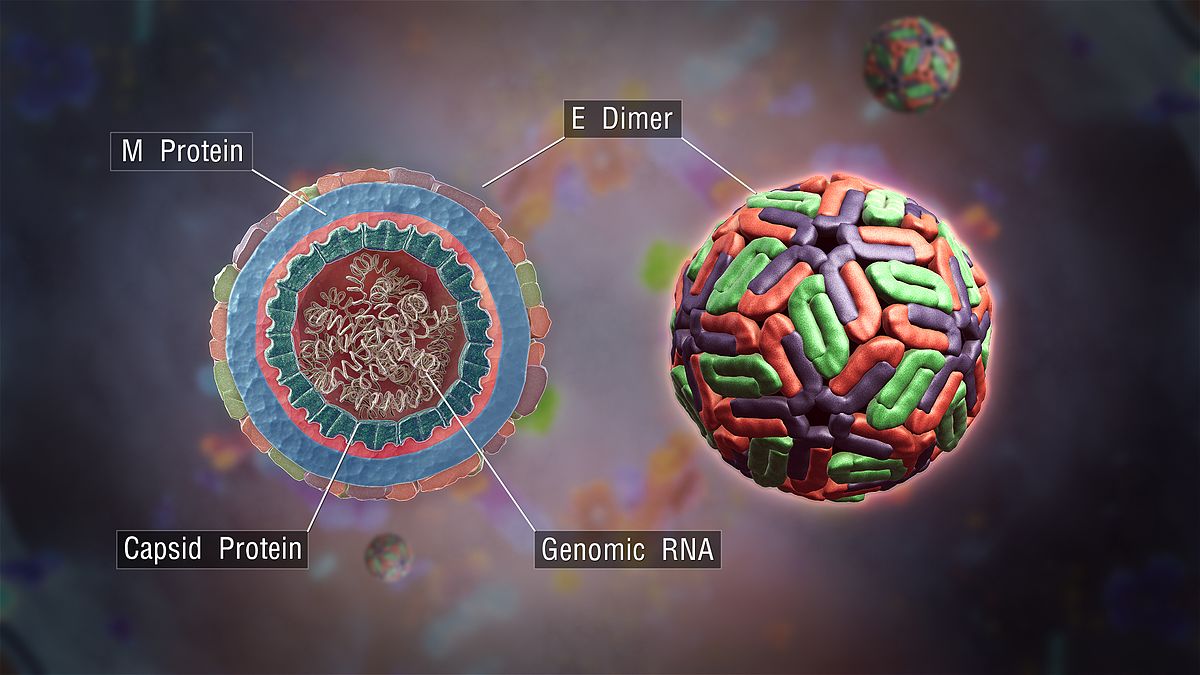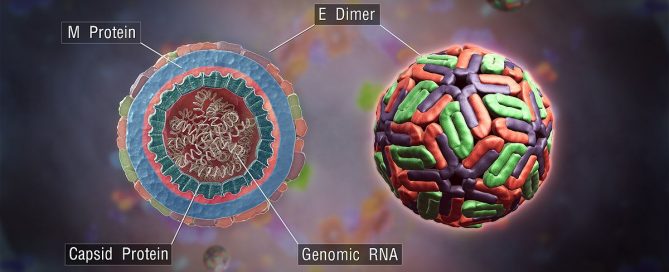El pasado mes de octubre se hizo el aviso de los primeros casos autóctonos de dengue en España. Se habla de un posible retorno, ya que esta enfermedad había estado presente en España hace siglos. Rubén Bueno, de Laboratorios Lokímica explica la situación actual en un artículo publicado en The International Society for Neglected Tropical Diseases.

By Girish Khera, Scientific Animations (http://www.scientificanimations.com/) [Public domain], via Wikimedia Commons
On 4 October 2018, the Spanish National Reference Laboratory for Arboviruses confirmed two locally acquired dengue cases in Spain; while a third case was confirmed only 12 days later by the same Center. All cases were retrospective (infection occurred in August 2018), are related to members of the same family and according to epidemiological investigations two different regions are postulated as the likely territories of transmission: Murcia (Southeastern Spain) and Cádiz (Southwestern Spain).
This is because during the incubation period, the cases were travelling by different municipalities of both regions. However, although the area of infection has not been determined yet, if we consider the incubation period of the disease (3–14 days) and the onset of symptoms of all three cases, the most probable place of infection seems to be the province of Cádiz. Anyway, further epidemiological and entomological studies should be done to clarify the area of infection as well as the potential appearance of new retrospective cases.
Dengue returns
According to ancient scientific literature, we cannot state that those are the first autochthonous cases of Dengue ever occurred in Spain, and maybe would be better to talk about the return of the disease after centuries. Outbreaks of other Aedes-borne arboviruses like Yellow Fever were common in the past in our country, basically in coastal cities and associated to boats coming from Africa that carried infected people and mosquitoes. Many authors suspect that behind these epidemics of Yellow Fever also hundreds of Dengue cases maybe took place. Those cases were probably undiagnosed due to poor knowledge of the disease in Europe and similarity of some symptoms between both arboviruses, although lethality is clearly lower in the case of Dengue. Different historians sign that first epidemic of Dengue occurred in Spain in 1784, precisely in Cádiz province, and was called “epidemia gaditana (epidemic from Cádiz)” or “piadosa (pious)” and characterized by benign fever processes. In those times Aedes aegypti was the main vector of both diseases, not only in Spain but also in many regions of Southern Europe. However, this species of mosquito disappeared from Mediterranean Europe due to reasons not yet clarified.
Since 2004 the situation of potential transmission of Dengue and other arboviruses changed in Spain due to the arrival of other potential vector of the disease: the Asian tiger mosquito named Aedes albopictus. Although Asian tiger mosquito is considered a secondary vector of Dengue, nowadays this species is the unique reliable agent that can transmit the disease in our country. This invasive species was recorded originally in the province of Barcelona (Northeastern Spain) and quickly was expanded by all Mediterranean provinces of our country. Today the species is not only present in coastal Mediterranean areas, but also has been recently recorded in inland regions and Atlantic coastal territories of Spain. The domestic and anthropophilic behavior of Ae. albopictus makes possible it’s proliferation in urban environments, being consequently one of the most important environmental threats for Public Health in many cities of Southern Europe.
Coordinated actions
Currently we are working hard in Spain in different ways to minimize the impact of Asian tiger mosquito and potential diseases transmitted like Dengue:
- Design and implementation of professional surveillance and control programs against Ae. albopictus in urban environments: it is essential to keep the vector populations under optimal thresholds to reduce nuisances and other potential serious implications for Public Health related to arbovirus transmission.
- Include and engage people in the fight against this domestic mosquito: most of the breeding sites of the species are placed in private areas where only the owners can eliminate these proliferation points (removal of small man made containers, review different structures that can accumulate water in private gardens,). The adoption of these codes of good practices by citizens is mandatory to fight efficiently against Asian tiger mosquito in urban environments. At this point different tools and strategies have been successfully implemented in recent years: educative projects, informative campaigns in media, door to door strategies, Mosquito Alert project (an APP to provide a useful tool for mosquito management through citizen science), etc.
- Specific protocols to conduct entomological actions surrounding imported cases of Dengue, Zika and/or Chikungunya: a strong coordination among epidemiology and vector control units is essential to conduct quick environmental actions that allow us to minimize the risk of disease amplification at local scale. Exahustive mosquito surveillance and control tasks should be accomplished once an imported case of Dengue, Zika or Chikungunya, with viremic phase after return, is diagnosed in Spain. To provide some data, we can indicate that Spain has reported 557 imported cases of Dengue over the period 2015-2017.
Summarizing, Dengue has returned as a potential disease that can be occasionally transmitted in Spain. After more that 200 years, the situation has returned to the starting point although with different vectors (increasing and well established populations of Aedes albopictus today, instead irregular distribution of Aedes aegypti that we had in the past), epidemiological context (nowadays Dengue is a notifiable disease in Spain) and sanitary conditions (most of the imported cases correspond to tourists and immigrants who come from epidemic countries and they have access facilities to Spanish sanitary system in order to be treated and monitored). So definitively, if an effort in terms of vector control and analyses of imported cases is conducted, it is unlikely to predict that epidemic outbreak could occur in Spain at short/medium term. However, isolated cases of Dengue autochthonous transmission related to biting activity of Ae. albopictus cannot been discarded as we have recently seen not only in Spain, but also in other Mediterranean countries like France or Croatia in recent years. Moreover, other factors like climate change and globalization can increase the risk of Dengue transmission in a near future. Anyway, what we can state is that Dengue has returned to Spain and we should be prepared to fight against it.
Original article:
Related news (Spanish):




